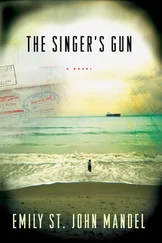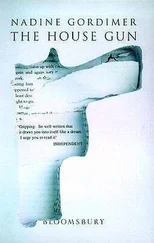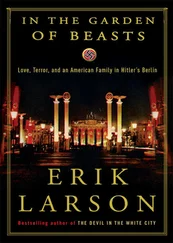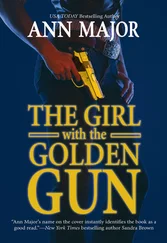The distance may seem absurdly close, but armed encounters often occur at that range, according to police firearms experts. Quigley had an additional motive for putting everyone so close, however. She wanted her students to hit the targets as often as possible to bolster morale. Aiming and shooting a handgun is not the easy matter TV cops and robbers make it out to be. Even at seven feet, many of the women taking the course missed the silhouette portion of the target and struck only the background.
After a few basic shooting drills, Quigley moved on to more advanced exercises, including one she called Mozambique—two shots to the body, one to the head.
“It’s awfully fun to do this,” she said.
She issued the command to begin shooting. There was a wild, prolonged crackle of gunfire. Sharp puffs of air from my neighbor’s gun tapped at my temple. Georgia clay erupted from the hillside beyond the targets.
“I hope we all got some good head shots in there,” Quigley said heartily, “because that’s what’s gonna stop him.”
She checked the targets to see how well everyone was doing. A few wildly spaced holes led her to suspect some students had been jerking the trigger instead of squeezing it.
“Squeeze smoothly,” she told the class, a sly grin again playing across her face as she moved along the firing line. “It’s really kind of a sexy move. I always say be sexy about it. Squeeeeeeze,” she murmured, “squeeeeeeze. Okay? That’ll kind of get your mind into it.”
We shot our guns one-handed, first with our dominant hands, then our weak hands. We shot while lying on our backs, an exercise intended to simulate firing while still in bed. One woman, supine on a muddy ground cloth, hit the target in the face with the first shot.
“Ooh,” another said in admiring disgust. “Right where it counts!”
More exercises followed. Empowerment was in the air.
“Feels good, doesn’t it?” Quigley exhorted. “You feel the power!”
When the class at last returned to the meeting room, Quigley asked her students one by one to tell their reactions to the course. The room took on the feel of a revivalist camp meeting. “Lisa,” Quigley said to Lisa Hilliard, an Atlanta bank executive who had never shot a gun before. “When you first walked in, I said, ‘Oh, God, she’s scared.’”
Quigley turned to the other students. “I could see it on her face. She was scared.”
Then back to Lisa. “How do you feel now, Lisa?”
Hilliard considered. “Great. I can’t believe how much fun it was. I mean, I just wanted to get through it; I didn’t expect to enjoy it.”
Quigley pointed to another woman. “Ginger?”
She was Ginger Icenhour, manager of a computer store in Tucker, Georgia. She too had never shot before but now professed to be ready to take on an assailant. “If he walks through that door, he’ll be surprised because I’m gonna shoot him.”
It is a tantalizing fantasy. Who among us hasn’t imagined walking down a dark street, being accosted by a bad guy, and reveling in his surprise as we draw our Dirty Harry Model 29s and blow him away? The myth of self-defense depicts the gun as a foolproof talisman capable of warding off trouble and restoring peace of mind.
But armed self-defense is a far more problematic venture than Quigley and the gun culture would have us all believe.
♦ ♦ ♦
The NRA’s 911 tape, played by Quigley, was indeed powerful, so compelling the NRA played it at its 1993 annual meeting in Nashville. There is another tape, however, that Quigley could have played just as readily. It is the 911 recording of a ten-year-old Florida boy, Sean Smith, who called the emergency line just after shooting his eight-year-old sister. At first his voice is soft; he pleads for understanding. He could be any little boy trying to explain a breach of household rules.
“I didn’t know my dad’s gun was loaded,” he says.
“Okay,” the operator says.
“And I shot her.” The boy’s voice wavers. “I didn’t mean to. She’s dead.”
Even the dispatcher is startled. He snaps, “She’s dead ?”
The boy loses all composure now. “Yes,” he cries, “please, get my mom and dad. Oh my God!”
The act of owning a gun for self-defense forces the gun owner to confront a paradox central to such ownership: to be truly useful for self-defense, a gun must be kept loaded and readily accessible at all times. “In other words,” Quigley wrote in her book, “an unloaded gun that is perfectly safe is perfectly useless.”
But a gun that is accessible to the parent is, by definition, just as accessible to the parent’s children or anyone else who visits the home, be it a jealous boyfriend or drunken spouse. Researchers fear the gun industry’s strategy of pitching handguns to women, particularly professional women and single mothers, will only heighten the risk to children. Even Quigley argues that certain households should not have guns, in particular those with a member who is alcoholic, takes antidepression drugs, or is prone to extreme bursts of temper—a sizable portion of the U.S. population. “If you have children at home,” she warned the Gainesville class, “really think about whether you should have a gun.”
Inherent in this last warning was the notion that women who did not have children should feel free to buy a gun. The warning, however, ignores the potential for collateral disaster that always exists in the presence of a gun. Women who live alone may have nieces, nephews, and grandchildren; their neighbors, friends, and lovers may have kids; the women may teach grade school, operate day-care centers, or baby-sit for friends, sisters, cousins, and colleagues. A study of accidental shooting deaths of children in California highlighted how a momentary lapse of vigilance by gun owners could quickly lead to tragedy, even in households that treated guns with exemplary care. In one case, the study reported, a six-year-old boy shot himself in the head with a handgun he found “in the purse of a houseguest.”
It is widely thought that Sarah Brady, chairperson of Handgun Control Inc., began her crusade against guns immediately after her husband, Jim Brady, was permanently injured in John Hinckley’s attempt to assassinate Ronald Reagan. In fact, she told a writer for the New York Times Magazine , the pivotal moment came later, in 1985, when her five-year-old son found a .22 handgun in a pickup owned by a family friend and pointed it at her. At first Brady thought it was a toy, then saw it was real and loaded.
Parents, however, seem all too willing to ignore the risks and to assume that their own kids are responsible enough to recognize the harm guns can do and to learn to “respect” them. A June 1993 Louis Harris survey, also conducted for the Harvard University School of Public Health, found that only 43 percent of parents who owned guns kept those guns under lock and key. Another study found that 10 percent of America’s armed parents openly admitted they kept their guns not only loaded but also unlocked and “within reach of children.” The mere fact that a full 10 percent of respondents actually admitted courting tragedy in this way should itself give us pause. It raises the suspicion that many other parents do likewise but are unwilling to confess to a practice many gun owners would find reprehensible.
Debbie Collins, a sixth-grade teacher who took Paxton Quigley’s course at the Cherokee Gun Club, has a daughter and a Smith & Wesson revolver (she doesn’t know the caliber). When we spoke late in 1992, her daughter was one and a half years old. Collins had been carrying a gun for about five years. During the workweek she locked her revolver in the glove compartment of her car in the school parking lot. While at home, she stored it loaded on top of the refrigerator. Her husband kept a loaded handgun at their bedside during the night.
Читать дальше








![Ричард Деминг - Whistle Past the Graveyard [= Give the Girl a Gun]](/books/412176/richard-deming-whistle-past-the-graveyard-give-t-thumb.webp)



